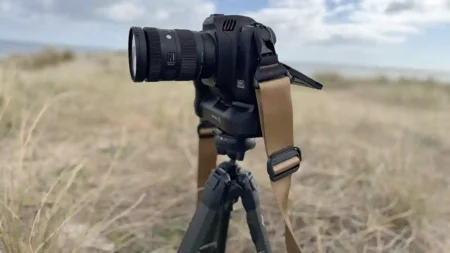Nikon has used plastic to make the Z DX 18-140mm f3.5-6.3 VR’s barrel and mounting plate. This helps keep the weight down to a portable 315g / 11.2oz, but it would be nice to have the reassurance of a metal mount.
At 90mm / 3.6-inches in length from the lens mount at its shortest and 73mm/ 2.9 inches in diameter, the Z DX 18-140mm f3.5-6.3 VR looks nicely matched to the Nikon Z50. At full extension (at the 140mm point) it measures around 136mm / 5.35 inches and doesn’t feel front-heavy or unbalanced on the camera.
The broad zoom ring sits towards the front of the lens and occupies around half its length at the shortest focal length. This ring has a nice firm movement and, although there’s no zoom lock, it doesn’t extend as you walk with the camera hanging on a strap. I noticed a slight change in the effort required to rotate the zoom ring between around the 35mm and 70mm, it seems very slightly stiffer than at either end, but not problematically so.
Further back towards the camera, the narrow control ring, which we would traditionally call the manual focus ring, feels looser than the zoom ring, but it moves smoothly and, again, isn’t sloppy.
This control ring can be set to adjust the aperture, ISO or exposure compensation when the autofocus system is in use, but when the camera is in manual focus mode, it’s for focusing. As the focusing is by wire, there’s no physical end point to the movement of the ring, however, a distance scale appears on the screen or in the viewfinder as soon as the ring is rotated.
As there are no buttons or switches on the lens barrel, the focus mode is set via the camera. Similarly, the lens’s stabilisation is activated or turned off using the Optical VR option in the camera’s menu.
There’s no option on the Z50 to set the viewfinder or on-screen image to enlarge when the focus ring is rotated, but there are on-screen zoom buttons which operate whether you’re looking at the screen or the viewfinder so you can zoom in to check the focus as you use the ring. There’s also the option to activate focus peaking.



